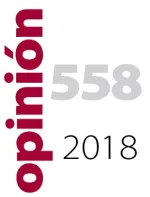UK Counters Rise of White Supremacists

The recent move to give Britain’s domestic security agency MI5 the lead in combatting extreme right wing terrorism did not hit the front pages, nor for that matter was it officially announced. But, after months of negotiations between senior government officials, the police and MI5, the decision suggests that many of those in charge of security in the United Kingdom have reached the conclusion that extreme right wing activity can amount to terrorism. Distinguishing between different forms of right wing activity is not easy: MI5's remit is to protect national security but not public order, which is the remit of the police. However, since the assassination of the Labour MP Jo Cox in June 2016 other events have brought to mainstream attention the growing far right terror threat which now sits in the same portfolio as Islamic and Norther Ireland-related terrorism. Security officials are worried about attacks on Muslim worshippers and attempts to radicalise members of the military and those who boast expertise with computers.
The 9/11 attacks in the US and the many terrorists acts which have killed scores of people since then in Madrid, Paris, London and other European capitals had, until recently, indelibly shaped Europe and, even more, America’s understanding of security and terrorism. Sticking the label Islam onto every act of violence in the Middle East and in Europe when it concerned people of Middle Eastern and North African origin further muddied the waters. The rise of the far right AfD in Germany and recent terrorist attacks in America have demonstrated how far right groups are fuelling violence in the US and Europe as extremism creeps into mainstream. Brexit and recent elections in Germany and Italy have brought to the fore politicians who are not afraid to tar their adversaries with smears and foul language in a way which, until a few years ago, was unthinkable.
What is happening in London does not mean that the danger of white supremacists is seen as being as severe as that posed by Islamic extremists. It is an acknowledgement however that racism is on the rise, that political polarization is on the increase and that images of the extensive apocalyptic violence tearing apart societies across the Middle East and North Africa have combined with the power of online communications to drive up violence across the political spectrum. The rise of populism is simply the political expression of this drift which has been fuelled, in Europe at least, by the incapacity of political leaders to have a serious debate about immigration. The EU’s Neighbourhood policy is but a fig leaf of its ambitious Lisbon agenda: fear of the other has become the norm with EU member states, across the EU and the continent’s relations with southern rim Mediterranean countries.
The drift of politics in the US is of particular concern in London, whose elites enjoy close ties with Washington. Many English people who thought they knew America well have yet to come to terms with the election of Donald Trump. They watch with dismay as the president strikes fascist poses and then denies any responsibility for his words. The distinguished American historian, Timothy Snyder, reminds us that “total irresponsibility is a central part of the fascist tradition….Thus Trump can base his rhetoric on the fascist idea of us and them, lead fascist chants at rallies, encourage his supporters to use violence, praise a politician who attacked a journalist, muse that Hillary Clinton should be assassinated, run an antisemitic advertisement, spread the Nazi trope of Jews as ‘globalists’ and endorse the anti-Semitic idea that the Jewish financier George Soros is responsible for political opposition – but he and his followers will puff chests and swell sinuses if anyone points this out”.
The Nazis claimed to be victims, so do some leading Brexiters and senior Italians: victims of Jews, immigrants, Muslim fanatics or the Brussels bureaucracy, you can take your pick. As Donald Trump borrows from the old tricks of fascism, as he repeatedly claims victimhood for himself and shifts the blame to the actual victims, notably African Americans, journalists or immigrants from Latin America, more and more Europeans are beginning to understand that in America, ubiquitous firearms have combined with aforementioned factors to make the terrorist threat in America primarily domestic in nature. In Germany, France, the UK and Italy, we might not have reached this stage – yet. But we should never forget that “fake news” was invented in Nazi Germany. “Lüggenpresse” is now fashionable again among extreme right wing groups in Germany and Austria and Trump has played no mean role in making the idea respectable.
In the United Kingdom, MI5 will now have a broader remit while Counter Terrorism Command (SO15) will take out any plot they uncover. Those who have been spinning ever more mendacious stories of Islam as a threat to Judeo Christian values will have to rework their script as they explain how the terrorist attack at a Pittsburg synagogue on October 27th, where 11 people were shot and killed, was carried out by a man with an extensive history of expressing anti-Semitic views on social media. The first assessment of the threat posed by the estimated one hundred extreme right wing and Nazi groups which are believed to exist in Britain was carried out by the Joint Terrorism Analysis Centre (JTAC) earlier this year. Traditionally the threat of Northern Ireland-related terrorism was greatest; Islamic terrorism followed after 9/11 and, more recently, espionage and heightened tensions with Russia. The activities of white supremacist groups have now been added to the list. The security forces in the UK and Europe have their work cut out.
Keywords: UK, MI5, terrorism, right wing, extreme right, extremism, Trump, Brexit
E-ISSN: 2013-4428
D.L.: B-8439-2012